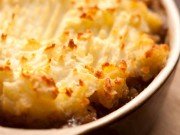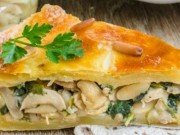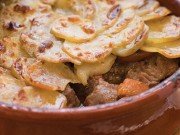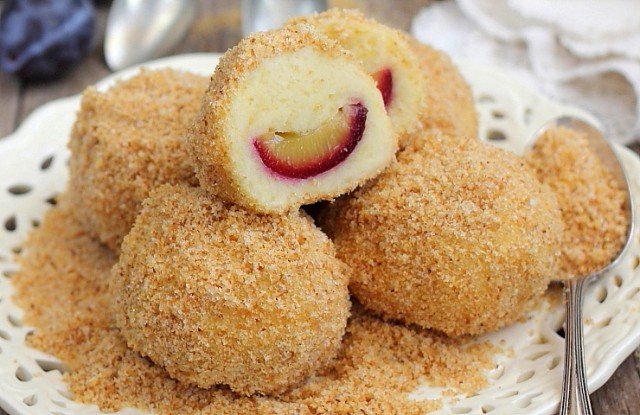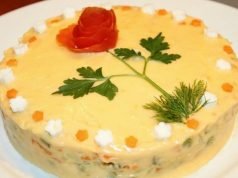Traditionally they would be eaten at the end of summer when the plums are havests (mostly for making plum brandy). They can be made at any time of year, supposing you can find the plums, but nothing beats making them with fresh juicy plums straight off your (or your neighbour’s) plum tree, or some lovely local plums from the nearest market selling produce brought in by peasants from around Bucharest. Look for middle-sized but juicy plums – give them a squeeze and see if they give a little. If they are too hard they won’t ‘melt’ during cooking and flavour the coat with their flavorsome juice.
I found several recipes for these, some of which contained a lot of butter and sugar, but the recipe I’m listing here is the ‘healthy’ version. It’s not as sweet as the butter- and sugar-filled ones, but none the worse for it. You can sweeten them up with a big dollop of jam by the side, and a drizzle of cream wouldn’t go amiss either.
Ingredients
400g of potatoes, peeled and chopped for boiling
100g of plain flour
1 teaspoon of oil
1/2 teaspoon of salt
1/2 teaspoon of caster sugar
As many fresh plums as you need, halved with stones removed
Breadcrumbs (pesmet)
1 tablespoon of butter
Icing sugar (or fine regular sugar will do)
Method
1. Boiled the potatoes and mash them up, adding the flour, oil, caster sugar, and salt. Leave it to cool.
2. Knead it for a while to obtain a good smooth dough. This dough won’t be like bread dough, it’ll be softer.
3. Take a golf ball-sized lump of the dough, flatten it in your hand until it’s about 1cm thick, place the stoned plum in the middle (the two halves back together again), and wrap the dough around it, shaping it into a ball with an approximately even covering of dough all around by gently rolling it between your palms.
4. Repeat this until you are either out of plums, or out of dough.
5. Drop your balls into a pan of hot salty water (ouch!). The water should be just on the point of boiling, but if the water is too hot it might break them apart, and you don’t want that.
6. Cook them in the now simmering water for about 3-5 minutes. They should be floating; if there aren’t, let them cook some more and give them a minute or two extra after they float to the top. It’s better to cook them in batches if your pan is quite small.
7. Remove them, drain them.
8. While they are cooking, very gentle brown the breadcrumbs in a dry pan until it just changes colour. Be careful not to but them or they’ll taste bitter. Once they are a nice golder colour (only takes a minute) stir in the rest of the sugar.
9. Roll the still hot and a little moist dumplings in the breadcrumb mixture until they are well coated.
10. Can be eaten cold, but best served immiately with a generous splot of your favourite jam and a little cream.










